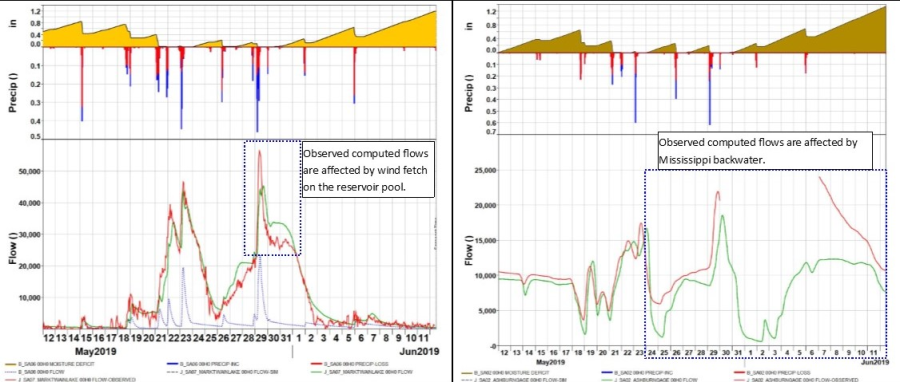HEC-HMS Model Calibration
Before using HEC-HMS for Flood Damage Reduction (FDR) analysis, it’s essential to ensure that your model is well-calibrated. Calibration is what gives confidence that the simulated results accurately represent real-world conditions—especially in estimating what would have happened without flood control infrastructure in place.
Why Calibration Matters
AFDR analysis is retrospective. It looks back at an actual flood event to determine how much damage was reduced by reservoirs and levees. To simulate what would have happened without those projects, you need a trustworthy hydrologic model.
- A well-calibrated HEC-HMS model ensures accurate inflow timing, peak flows, and total volume—especially at upstream computation points feeding into reservoirs.
- Errors in calibration will ripple through your HEC-RAS and HEC-FIA models, compromising regulated vs. unregulated flow comparisons and leading to unreliable AFDR results.
AFDR results rely heavily on getting reservoir inflows right—not just the peak, but also the volume and timing. That’s what drives downstream flow behavior in the unregulated scenario.
Observed vs. Simulated Reservoir Inflows
When it comes to reservoir inflows, observed data is always preferred—if it's available and reliable.
- If good-quality observed reservoir inflows exist, use them.
- If not, rely on HEC-HMS simulated inflows, ensuring the model is calibrated as accurately as possible.
Key Calibration Tips for AFDR
- Choose the correct seasonal or antecedent condition alternative (e.g., summer, winter, or dry) that matches the actual event.
- Focus on total volume and realistic hydrograph shape more than matching every hourly variation.
- Make sure ungauged local flow areas are calibrated—these local inputs are crucial for downstream HEC-RAS routing and AFDR analysis.
The figure below shows a typical HEC-HMS inflow calibration, comparing simulated and observed hydrographs—a valuable visual check before moving on to hydraulic (HEC-RAS) and economic (HEC-FIA) models.

Using Blending in HEC-HMS
Blending in HEC-HMS can be used to refine computed streamflows by incorporating observed data. This helps reduce residual errors in routing and can improve accuracy in downstream reaches.
Here’s how it works:
- Observed flows override computed flows at specific points.
- The model then transitions back to computed flows downstream, gradually blending the two.
Blending is not a substitute for proper model calibration.
Use blending only if:
- Calibration is already as good as practically possible.
- You have high-quality observed flow data at the blending points.
There are no large, unexplained discrepancies between simulated and observed flows.
Poor blending can cause abrupt flow changes that destabilize your HEC-RAS or HEC-ResSim simulations and skew your AFDR analysis. For more detail on blending and best practices, refer to the HEC-HMS Users Manual.